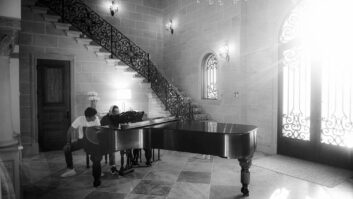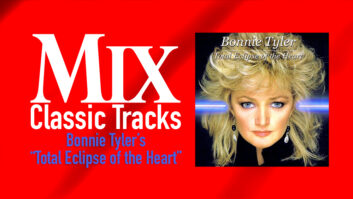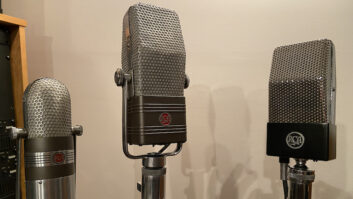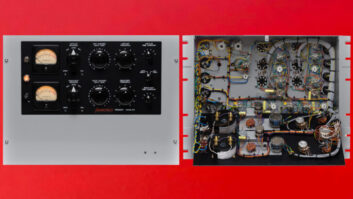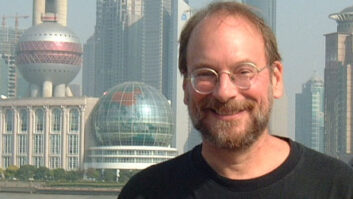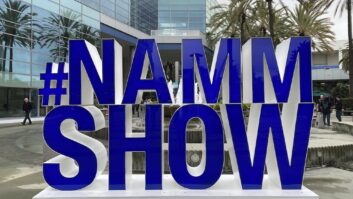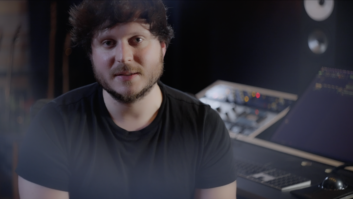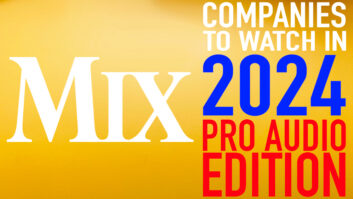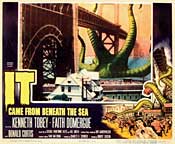

With its infinite scenic vistas, colorful neighborhoods and rich history, San Francisco has always been a magnet for filmmakers. It’s the city The Thin Man called home. Where Sam Spade hung his shingle. It was nearly destroyed by a giant octopus in the 1955 film, It Came From Beneath the Sea. It’s where things turned weird for Kim Novak in Vertigo and where Dirty Harry chased down a psychotic killer. Steve McQueen couldn’t be tamed by its notorious hills in Bullitt, and it took a superhero’s intervention to save the Golden Gate Bridge from destruction in Superman II. The Invasion of the Body Snatchers (V2) found aliens beginning their quest for world domination there, and Mrs. Doubtfire singed her falsies on a stove in a San Francisco Victorian.
Yes, plenty of films (and television shows) have been shot in the Bay Area through the years, but more often than not, they’ve been posted elsewhere — usually in L.A., 400 miles to the south. Still, there has been a vibrant and important film post scene in the Bay Area for more than three decades now, and a number of film sound innovations and new work methods have emanated from editors and mixers working on projects by the Bay. While the region may never become “Hollywood North” (as some once suggested), it continues to attract many interesting and important films, and to be a creative locus point for some of the industry’s most creative and independent talents.
Before we take a whirlwind look at the history of film sound in the Bay Area — from Coppola to Pixar — we should acknowledge that this region has long been a thriving and highly supportive center for the documentary film community, as well as for makers of avant-garde and experimental “art” films. Canyon Cinema, formed in 1961 and still going strong today, has nurtured the careers of many fringe filmmakers and has done vital work in preserving rare prints of experimental films dating back to the ’30s. On the documentary front, the Bay Area has produced scores of significant films — several of them Oscar winners — through the years. This is an area known for its evolved social consciousness and liberal-to-radical political leanings, and many of the documentaries made by local filmmakers have reflected those concerns. For a number of years, too, San Francisco’s public television outlet, KQED, was active in funding local documentarians and experimental filmmakers. From 1967 to 1975, that station’s Experimental TV Project (later renamed the National Center for Experiments in Television) was a fearless advocate for alternative filmmakers, and KQED’s Newsroom show kept documentary crews buzzing and 16mm post specialists busy year-round.
Walter Murch at his home Avid suite
Photo: Steve Jennings
On the feature film front, however, our story begins with Francis Coppola, a former New Yorker, UCLA film school student and a product of director Roger Corman’s famous Hollywood B-movie mill. In 1967, Coppola was hired to direct the big-budget musical Finian’s Rainbow, and it was on the set of that film where he met a promising USC film school student named George Lucas, who had won a scholarship from Warner Bros. that allowed him to watch Coppola in action. The following year, Lucas worked as an assistant on Coppola’s next film, The Rain People, and lensed a documentary about the making of that movie called Film Maker. By the time Rain People was ready for posting, Coppola, Lucas and Lucas’ film school friend Walter Murch (who’d been the runner-up for the Warner Bros. scholarship) had left L.A. and moved north to the Bay Area to set up what they hoped would be a new style of film production company called American Zoetrope. Lucas, a native of the central California city of Modesto, had lived in San Francisco previously and, as he noted in a 1999 interview with the Academy of Achievement, after college, “I was interested in going back to San Francisco and making experimental films or maybe documentaries…Everybody said, ‘Why are you going to San Francisco?’ I said, ‘That’s where I live.’ They said, ‘You can’t possibly work in the film business living in San Francisco.’ And I said, ‘I want to live where I want to live, and I will make films because I love to make films.’”
“The first item on our agenda,” Murch wrote (New York Times, 2000) of the early days of American Zoetrope, “was the mix of The Rain People in the unfinished basement of an old warehouse on Folsom Street.” That basement would soon become the new home of San Francisco’s premier recording studio of that time — Coast Recorders — and Zoetrope moved upstairs to the mezzanine and second floor. The facility was stocked with equipment Coppola had purchased on a trip to Eastern Europe: “We had a KEM mixing setup, which was transports and a mixing board that had 20 inputs and four outputs,” Murch remembers. “We had eight 35mm transports. One of them was used for picture, one was used for the 3-track recorder and the other six were used for playback: Two of them were 3-track playbacks and the other four were [for] striped playback.
“From Zoetrope’s beginning,” Murch wrote, “the idea was to try to avoid the departmentalism that was sometimes the byproduct of sound’s technical complexity, and that tended too often to set mixers, who came mostly from engineering, against the people who created the sounds…We felt there was now no reason — given the equipment that was becoming available in 1968 — that the person who designed the soundtrack shouldn’t also be able to mix it, and that the director would be able to talk to one person — the sound designer — about the sound of the film the way he was able to talk to the production designer about the look of the film.”
Zoetrope’s Folsom Street facility was even more important in the making of Lucas’ THX 1138, a feature-length adaptation of an award-winning student film he’d made at USC and re-released in September of this year. Murch co-wrote the screenplay and was credited with “sound montage.” Coppola was executive producer.
By 1971, Coppola had won his first Oscar for co-writing the screenplay of Patton, and that helped him land the plum assignment of directing and co-writing the film adaptation of Mario Puzo’s then-unreleased novel, The Godfather, for Paramount, a gig that would change his fortunes forever. While picture editing and some sound editing and premixing work for The Godfather was done at Zoetrope, according to Murch, “Bob Evans of Paramount got frustrated and said, ‘I want that film down at Paramount,’ so sometime in October, the film left San Francisco and we went down to L.A. and the mix was done at Goldwyn Studios — what is now Warner Hollywood. We started just before Christmas [1971] and finished toward the end of February.” Noted Hollywood mixer Richard Portman was part of the team that worked on that mix. The film would be a smashing success and lauded as one of the great films of all-time, earning Coppola a level of independence for future projects that allowed him to insist that post work on his films remain in Northern California.
Meanwhile, Lucas started his own production company, Lucasfilm Ltd., spent many months writing a screenplay of his own — American Graffiti — and landed a modest budget of $750,000 and a chance to direct his creation. Working at Zoetrope, Murch deftly handled the film’s mix of nearly constant rock ‘n’ roll songs as score with the action of the film. Coppola produced the film, which went on to be one of the highest-grossing films of 1973 and established Lucas as a filmmaking force.
Murch’s next challenge was a film about sound in a sense. The Conversation, directed by Coppola, gave the budding sound designer a marvelous canvas on which to be creative; it remains a masterpiece of evocative sound work, an important touchstone in the modern history of the art form. By comparison, Coppola’s The Godfather: Part II seems like a more “conventional” film, but it, too, is filled with wondrous film sound moments. These two films together — both released in 1974 and both nominated for Best Picture (Godfather II won) — helped cement Coppola’s reputation among film’s elite directors, and proved that great sound jobs did not have to originate in Hollywood or New York.
A pair of important Bay Area film sound figures entered the picture (so to speak) on Godfather II. Mark Berger was a UCLA film school graduate living in the Bay Area and doing sound for documentaries when he met Murch. “There was a screening of a documentary I’d done at Francis’ studio at Coast [Recorders], and Walter saw it and liked it,” Berger says. “He asked me if I wanted to work on The Conversation with him, but it was delayed and delayed and I ended up not doing it. Instead, I went to Cuba for a documentary about Castro. By the time I came back, they’d done Conversation, so Walter said, ‘Let’s do Godfather II.’” Working with Murch (as “sound montage associate”) was Berger’s feature-film break.
Apocalypse Now‘s mix crew, led by, front row, from left: Walter Murch, Mark Berger and Richard Beggs
Photo: Doug Hemphill
Richard Beggs had a background in painting and hi-fi before he started recording concerts for Berkeley’s listener-sponsored radio station KPFA in the mid-’60s. Once he found that he could actually make money doing recordings, he set up a small studio of his own and eventually moved into the North Beach space once occupied by Columbus Recorders. There, he successfully toiled away on commercials and music demos until the fateful day when Coppola bought the building “and started to use my studio as a screening room on Godfather II,” Beggs says. “They would screen dailies there. The screen came down on the wall where my glass was, so I’d be working in there on some commercial for PSA or Pacific Telephone or Foster Farms chicken and I had this huge image four feet in front of me — I could see this movie playing out in reverse. It was pretty claustrophobic. Anyway, Francis was very courteous. Even though he owned the building, I had my lease and he was respectful of that. But slowly I became integrated into that organization. There were odd jobs that needed to be done from an audio point of view. I had a good live space for voice-overs. Someone would come in to do some sound effects. I did a lot of drips and drabs — nothing that would ever deserve a screen credit. But by the next one — Apocalypse Now — I’d been sucked in.” Beggs has worked on Zoetrope projects (and many others) ever since.
Across the Bay in Berkeley, Saul Zaentz was making the move from head of Fantasy Records — a jazz label that lucked into a sizable fortune after it signed Creedence Clearwater Revival, which included one-time Fantasy shipping clerk Tom Fogerty — to movie producer. The first film he financed was the critically acclaimed, low-budget Payday in 1972. Two years later, Michael Douglas, who owned the rights to Ken Kesey’s novel, One Flew Over the Cuckoo’s Nest, approached Zaentz about making a film of that best-selling book. Always a maverick himself, Zaentz hired Milos Forman to direct and Jack Nicholson, red-hot after a number of triumphs in the early ’70s, was brought in to play the lead; quite a coup. Although Payday had posted in L.A., this time, Zaentz wanted the work to stay local, and Fantasy already had a fine recording facility in Berkeley that had been largely financed by Creedence’s success. Mark Berger was brought in to be post supervisor on the film.
“What defined you as a player [in the film business] was having your own mix studio,” Berger says. “This showed independence from L.A. So we built a mix studio in what was a recording studio — Studio A at Fantasy. We cut some holes in the rear wall for projectors, and that’s where we mixed One Flew Over the Cuckoo’s Nest. We had a 16-channel API console on a platform that we’d roll in and plug into the wall. We’d lower the screen and we had four or five dubbers and a 3-track recorder and it was done that way. The small studio building was ‘The House That Creedence Built.’ The big [seven-story] building that was put up above the studio after Cuckoo’s Nest that was such a success is ‘The House That Jack Built,’” he says with a chuckle. “After the big building went up, we built a larger studio with a bigger board, a Harrison PP1 with automation.”
George Lucas (left) and Ben Burtt, mid-’80s
Photo: Courtesy Lucasfilm Ltd.
After American Graffiti, Lucas turned his attention to a very different kind of idea: a futuristic space saga he had conceived. This, of course, was Star Wars. 20th Century Fox gambled on the young writer/director and by the middle of 1975, Lucas was well on the road to assembling his team to make the film. That was the year when Lucas formed the soon-to-be-legendary visual effects group Industrial Light & Magic (ILM) and his film sound offshoot, Sprocket Systems (which would later morph into Skywalker Sound). At the time, Lucas noted that he wanted to find an “audio director” for the film who could fill the sort of all-encompassing supervisorial role that Murch had occupied for Coppola’s films (and for American Graffiti), and this led him to another young USC film school graduate, Ben Burtt. While Lucas was shooting the film on soundstages in London and the desert of Tunisia, Burtt was back in California developing sounds for the characters and events in the film.
Ben Burtt at Skywalker Sound
Photo: Courtesy Lucasfilm Ltd.
When it came time to post the film, Lucas kept the job in L.A. Mike Minkler and Les Fresholtz handled most of the premixing — quite a chore because there were literally hundreds of tracks to deal with; an anomaly for that time. The main mix was done by Bob Minkler (uncle of Mike), Ray West and Don MacDougall at Goldwyn Studios. The film won a Best Sound Oscar for those three re-recording mixers in 1978 (and for production sound mixer Derek Ball), and a Special Achievement Oscar went to Burtt for his work creating alien, creature and robot voices. The film was also notable for being among the first Dolby Stereo films and for the 6-track mix devised in part by Dolby consultant Steve Katz, who conceived of using two tracks for low-frequency information — what Minkler called “baby boom” channels. At the time, only about 150 theaters in the U.S. were equipped to show Dolby Stereo; after Star Wars (and Spielberg’s Close Encounters of the Third Kind, released the following year), the floodgates opened for Dolby as more and more theaters became conscious of the importance of good sound to this new generation of effects-driven spectaculars.
Star Wars would become the highest- grossing film of all time (for a period) and, because he had negotiated for the ancillary rights (such as merchandising, which was basically not done at that time, outside of Disney), Lucas became a very wealthy man. During the late ’70s, Lucasfilm expanded considerably as work began on The Empire Strikes Back and Raiders of the Lost Ark.
Meanwhile, Coppola was going through an assortment of high crises and catharses as he struggled to complete his Vietnam War opus, Apocalypse Now. Production in the Philippines had gone way over schedule (and budget) and now, the post-production was shaping up as a potential quagmire. Before it was over, Apocalypse Now would employ many of the Bay Area’s best sound and post people, use several of its top studios and drive more than a few technical types a little crazy on its way to becoming an acknowledged sonic and visual masterpiece.
Coming in Part Two: Bay Post — Apocalypse to Pixar.
Blair Jackson is Mix‘s senior editor.

Click here to read Larry Blake’s feature on Apocalypse Now and Apocalypse Now Redux, the rerelease of the 1979 classic.
To read “25 Years of Film Sound: Making Movies in the Digital Era” by audio pioneer Walter Murch,
click here.
